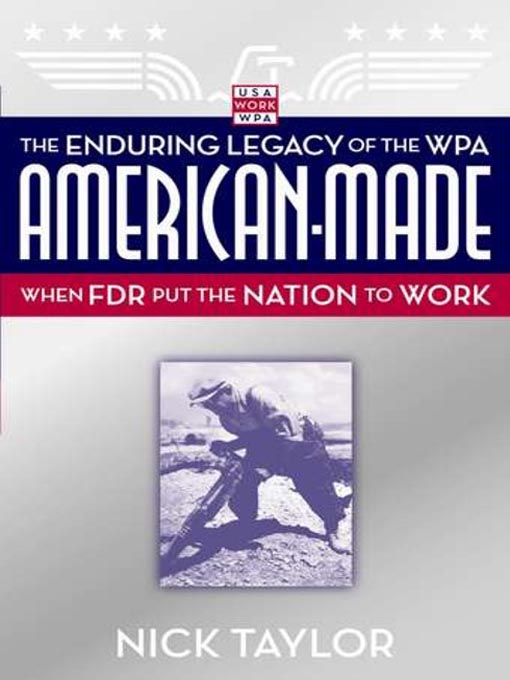- SECAF Reading List
- CSAF and CMSAF Leadership Library List
- CSO Reading List
- See all air force collections
American-Made
The Enduring Legacy of the WPA: When FDR Put the Nation to Work
What people wanted were jobs, not handouts—the pride of earning a paycheck. And in 1935, after a variety of temporary relief measures, a permanent nationwide jobs program was created. This was the Works Progress Administration (WPA), and it would forever change the physical landscape and the social policies of the United States.
The WPA lasted for eight years, spent $11 billion, employed 8.5 million men and women, and gave the country not only a renewed spirit but a fresh face. Under its colorful head, Harry Hopkins, the agency's remarkable accomplishment was to combine the urgency of putting people back to work with its vision of physically rebuilding America. Its workers laid roads and erected dams, bridges, tunnels, and airports. They stocked rivers, made toys, sewed clothes, and served millions of hot school lunches. When disasters struck, they were there by the thousands to rescue the stranded. And all across the country the WPA's arts programs performed concerts, staged plays, painted murals, delighted children with circuses, and created invaluable guidebooks. Even today, more than sixty years after the WPA ceased to exist, there is almost no area in America that does not bear some visible mark of its presence.
Politically controversial, the WPA was staffed by passionate believers and hated by conservatives; its critics called its projects make-work, and wags said WPA stood for "We Piddle Around." The contrary was true. We have only to look about us today to discover its lasting presence.
-
Creators
-
Publisher
-
Awards
-
Release date
March 24, 2008 -
Formats
-
OverDrive Listen audiobook
- ISBN: 9781400126514
- File size: 582531 KB
- Duration: 20:13:36
-
-
Languages
- English
-
Reviews
-
AudioFile Magazine
Narrator James Boles enlivens the story of the WPA's creation in 1935, its emphasis on employing the most people, the brilliant stewardship of Harry Hopkins, the scope of its projects--from the construction of the Timberline Lodge on Mt. Hood to the serving of hot school lunches--its detractors, and its ultimate replacement by the war industry. This history lesson is so fascinating that all that's required in audio is a friendly pace and clear diction. Boles gives this and more. You hear echoes of FDR and Churchill in quotes and genuine sympathy in the descriptions of the hardships of unemployment without a safety net. This would be a good title for the road (maybe WPA-built?) as listening in sections doesn't hurt the experience. J.B.G. (c) AudioFile 2008, Portland, Maine -
Publisher's Weekly
Starred review from December 10, 2007
Launched in 1935, at the bottom of the Great Depression, the Works Progress Administration (WPA) served as a linchpin of FDR’s “New Deal.” Through the WPA, Roosevelt put millions of unemployed Americans to work on public construction projects, from dams and courthouses to parks and roads. The WPA’s Federal Writers Project employed a host of artists and writers (among them Jackson Pollock, Saul Bellow, Ralph Ellison, Zora Neale Hurston and Studs Terkel); theater and musical artists also received funding. Taylor (Ordinary Miracles: Life in a Small Church
) vividly and painstakingly paints the full story of the WPA from its inception to its shutdown by Congress in 1943, at which point the war boom in manufacturing had made it unnecessary. In an eloquent and balanced appraisal, Taylor not only chronicles the WPA’s numerous triumphs (including New York’s LaGuardia Airport) but also its failures, most notably graft and other chicanery at the local level. Taylor details as well the dicey intramural politics in Congress over which states and districts would get the largest slice of the WPA pie. All told, Taylor’s volume makes for a splendid appreciation of the WPA with which to celebrate the upcoming 75th anniversary of the New Deal’s beginnings in 1933.
-
Loading
Why is availability limited?
×Availability can change throughout the month based on the library's budget. You can still place a hold on the title, and your hold will be automatically filled as soon as the title is available again.
The Kindle Book format for this title is not supported on:
×Read-along ebook
×The OverDrive Read format of this ebook has professional narration that plays while you read in your browser. Learn more here.


